On the Ground
in Eastern Kentucky
They’re baking and selling bagels. Lending money to support startups. Building affordable housing.
A tour introduces people who are at work, investing in eastern Kentucky. For Federal Reserve Governor Lael Brainard and Cleveland Fed researchers and community development practitioners, such meetings afford another window into how Americans are experiencing the economy.

A Visitor's Welcome
Part 1: Winchester, KY
We went to 5 places in a day and a half. Covered more than 100 miles. Discussed access to credit, the way art can change communities, and more. Visited a man who’s moved from a termite-rotted home to a brand new house he can afford.
At each of these places, people described the persistent challenges of life in eastern Kentucky and the ways they are trying to surmount them. They know work remains to be done, but many have tasted success.
This is why we—the Federal Reserve—traveled to meet them: to better understand the region’s opportunities and challenges and to identify practices that effect positive change here and perhaps could do the same elsewhere.
While the Federal Reserve is better known for monetary policy and bank regulation, the US central bank also works to promote economic growth and stability in low- and moderate-income communities across the country through its community development programs. To do so, the Fed’s people—both from the Board of Governors in Washington DC and the 12 Federal Reserve Banks across the country—meet stakeholders where they live to witness how Americans are experiencing the economy. Data alone can’t paint the complete picture.
Much of eastern Kentucky is very rural. The region faces tall economic challenges due to its rural character, but at the same time, those rolling mountains and dense forests are, for many, reason to stay.
In some outlying areas, there are no roads and utilities—electricity, a fiber network, water and sewer—to support development. Some businesses operating here feel the pinch of stocking up on inventory because suppliers don’t deliver through this terrain as often as they do to cities. There are industries that are retracting and, with that withdrawal, people who are leaving, reducing already limited tax bases.
Rural America faces unique challenges, not the least of which is its population loss, says Dr. Lael Brainard of the Board of Governors of the Federal Reserve System, who joined Cleveland Fed staff to visit eastern Kentucky, one region the Federal Reserve Bank of Cleveland serves. It’s the 10th trip she’s taken as a Federal Reserve governor to areas with concentrated poverty around the United States, gathering insights relating to who’s starting businesses, problems communities are working to overcome, and more.
“In the case of certain parts of the country—including eastern Kentucky—in addition to overall national ups and downs of the recession and the recovery, there are specific factors that you need to be on the ground to understand: the growth rate, employment, resilience,” Governor Brainard says.
“In the case of certain parts of the country—including eastern Kentucky—in addition to overall national ups and downs of the recession and the recovery, there are specific factors that you need to be on the ground to understand: the growth rate, employment, resilience.”
- Dr. Lael Brainard of the Board of Governors of the Federal Reserve System
Those who hosted us recently described challenges, yes, but also shared important successes. Here is the eastern Kentucky we met.



The Foundation
Part 2: Winchester, KY
Seated inside the offices of The Greater Clark Foundation, we explore the prologue and epilogue for a local theatre, which are starkly different.

Why we stopped here:
As healthcare consolidates, hospitals are sold, and in some places, the proceeds from the sale of their assets are used to seed charitable foundations. The Greater Clark Foundation is one, young example.
Early in the renaissance of the Leeds Theatre in Winchester, Kentucky, police were asked to keep watch over the building and the surrounding neighborhood. Before recent investment, the theatre’s unused marquee and stillness hung heavy, a ghost of the community life that once teemed there.

Deferred maintenance of the 1925 theatre had resulted in a significant roof leak. One February evening, remembers Tracey J. Miller, board president of the Leeds Center for the Arts, children were mopping the stage between scenes of their play.
The theatre’s roof is now replaced thanks to funds that include a combination loan and grant from the foundation and tens of thousands of dollars from other funders.

Recipients of The Greater Clark Foundation’s grants are not organizations only: Through its “What’s Your Ambition?!” grants, everyday citizens, even a 6-year-old girl, can apply for funds to bring their ideas to fruition. (The child’s idea peppered lawns with signs discouraging motorists from speeding.)
“We saw these signs in front of trailer parks and mansions, in rural and urban areas,” says Jen Algire, president and CEO of The Greater Clark Foundation. “It just kind of really took off. People paid attention to it.”

Local police say speeding declined by about 50 percent.
“We saw these signs in front of trailer parks and mansions, in rural and urban areas. It just kind of really took off. People paid attention to it.”
- Jen Algire, president and CEO of The Greater Clark Foundation
Change to the theatre district is emerging, too: A pottery studio near the theatre sells its artists’ wares and teaches classes. Two doors down, high-end residences are planned. A shuttered hardware store has reopened, too, after a couple bought and renovated it. It’s now D & S Hardware.
“The first year, we had a very strong police presence for most of our events,” recalls Selina Arnett, vice president of the Leeds Center for the Arts. “People weren’t comfortable. Now, people are comfortable.”
Locals are proud of the generosity here: That a community of its size has both a private foundation and a community foundation says something about Winchester’s charitable giving. It is also a place deeply segregated by race, by class, and by faith. While not as impoverished as some eastern Kentucky counties, Clark County shares with its neighbors the challenges of drug abuse and a dearth of jobs that fit locals’ skills, and vice versa.
Winchester is Clark County’s only city, so the success of its downtown is of great importance to the region. Leeds Theatre stands on North Main Street in a particularly challenged block, and given the importance of culture to attracting new residents to the city, those backing the Leeds Center for the Arts would like to see North Main developed into an arts district, Miller says.
To find the front door of The Greater Clark Foundation, we navigated a road that snakes off a main thoroughfare past open land parcels and doctors’ offices. This land is the former site of a hospital and the future site of an urban park, the foundation’s first big placemaking project, due to open in 2018. (Placemaking uses a region’s art, cultural activities, and resources to shape a place and stimulate a local economy.) Proceeds from the sale of the hospital assets seeded the foundation, whose mission is thus tied to health.
“People were born at the hospital, they got well there, they were employed there, they passed away there,” says Beth Jones, program officer for the foundation. “It meant a lot to this community. The urban park is going to be a beautiful place that offers access to safe and free recreation.”
The land—vividly green on this rainy spring day—borders two low- and moderate-income communities. It will have no basketball or tennis courts, which already exist in Winchester, but instead a walking path and a play area that will be highly ADA-accessible, says Jones, something leaders anticipate will make this a regional draw because not many other play areas here are accessible in that way.
As we pack up to leave the foundation, Algire shares she’s happy to have had this chance to meet with the Fed. “The Fed has a powerful voice in the country,” she says. “When the Fed talks and moves markets, what happens, happens at our level.”
Back on the road, headed south, Kentucky horse fences line some rolling green hills. Dotting the hills are the occasional livestock: cows, sheep, horses, of course. Forty minutes separate us from Berea, Kentucky.
Theatre Before
All images courtesy of Leeds Center for the Arts



















The theatre lobby, following a fresh coat of paint, would become a soft white color. Here, only primer is applied. Courtesy of Leeds Center for the Arts
The theatre lobby, following a fresh coat of paint, would become a soft white color. Here, only primer is applied. Courtesy of Leeds Center for the Arts

Some front-row seats were water damaged. The group renovating the theatre removed them and added wheelchair-accessible seating. Courtesy of Leeds Center for the Arts.
Some front-row seats were water damaged. The group renovating the theatre removed them and added wheelchair-accessible seating. Courtesy of Leeds Center for the Arts.

A portion of stage right destroyed by water. Evident here are the theatre’s previous colors, including a dark mauve. Its new palette includes a green, an off-white, and gold trim. Courtesy of Leeds Center for the Arts.
A portion of stage right destroyed by water. Evident here are the theatre’s previous colors, including a dark mauve. Its new palette includes a green, an off-white, and gold trim. Courtesy of Leeds Center for the Arts.

Pictured here is the mezzanine level right after the carpet was ripped up. Now, the doors are black and the walls are off-white. Courtesy of Leeds Center for the Arts.
Pictured here is the mezzanine level right after the carpet was ripped up. Now, the doors are black and the walls are off-white. Courtesy of Leeds Center for the Arts.

Deferred maintenance of the 1925 Leeds Theatre in Winchester, Kentucky, resulted in a significant roof leak. Pictured is the stage floor, portions of which were replaced during renovations in 2017. Courtesy of Leeds Center for the Arts.
Deferred maintenance of the 1925 Leeds Theatre in Winchester, Kentucky, resulted in a significant roof leak. Pictured is the stage floor, portions of which were replaced during renovations in 2017. Courtesy of Leeds Center for the Arts.

A look at the carpeting before renovation. It was blue indoor–outdoor here, but brown in the lobby. After renovations to the Leeds Theatre, the carpeting is consistent throughout the building. Courtesy of Leeds Center for the Arts.
A look at the carpeting before renovation. It was blue indoor–outdoor here, but brown in the lobby. After renovations to the Leeds Theatre, the carpeting is consistent throughout the building. Courtesy of Leeds Center for the Arts.

Plaster damage at the Leeds Theatre. Courtesy of Leeds Center for the Arts.
Plaster damage at the Leeds Theatre. Courtesy of Leeds Center for the Arts.

Workers renovate the Leeds Theatre. The bulk of the work took 3 months in early 2017. Replastering was the biggest job. Courtesy of Leeds Center for the Arts.
Workers renovate the Leeds Theatre. The bulk of the work took 3 months in early 2017. Replastering was the biggest job. Courtesy of Leeds Center for the Arts.

The Leeds Theatre concessions counter before its 2017 renovation. Courtesy of Leeds Center for the Arts.
The Leeds Theatre concessions counter before its 2017 renovation. Courtesy of Leeds Center for the Arts.

Before 2017 renovations to the theatre began, volunteers covered the chairs to protect them from plaster and paint. Courtesy of Leeds Center for the Arts.
Before 2017 renovations to the theatre began, volunteers covered the chairs to protect them from plaster and paint. Courtesy of Leeds Center for the Arts.

The previous mauve and gray paint of the Leeds Theatre is seen here before renovations in 2017. Courtesy of Leeds Center for the Arts.
The previous mauve and gray paint of the Leeds Theatre is seen here before renovations in 2017. Courtesy of Leeds Center for the Arts.

Before renovations, the theatre roof’s plaster had given way above a stairwell.
Before renovations, the theatre roof’s plaster had given way above a stairwell.

Usually hidden by the stage curtain, original plaster cherubs above and to the right and left of the stage were realized during theatre renovations.
Usually hidden by the stage curtain, original plaster cherubs above and to the right and left of the stage were realized during theatre renovations.

Because of water damage, wood on both sides of the theatre entrance needed to be replaced. Volunteers did it all.
Because of water damage, wood on both sides of the theatre entrance needed to be replaced. Volunteers did it all.

Evident here are the Leeds Theatre’s previous colors and the scaffolding necessary to fix damaged plaster on stage left.
Evident here are the Leeds Theatre’s previous colors and the scaffolding necessary to fix damaged plaster on stage left.

Stage left is where the worst of the theatre’s water damage was. A portion of plaster had completely crumbled away near where audiences would sit. Renovations in 2017 replaced it.
Stage left is where the worst of the theatre’s water damage was. A portion of plaster had completely crumbled away near where audiences would sit. Renovations in 2017 replaced it.

The view from the theatre across Main Street in Winchester, Kentucky. Early in the renaissance of the Leeds Theatre, police were asked to keep watch of the building and the surrounding neighborhood.
The view from the theatre across Main Street in Winchester, Kentucky. Early in the renaissance of the Leeds Theatre, police were asked to keep watch of the building and the surrounding neighborhood.

The marquee of the Leeds Theatre in Winchester, Kentucky, is the last upgrade to come. The group renovating it has a $13,000 grant from Pepsi for its completion.
The marquee of the Leeds Theatre in Winchester, Kentucky, is the last upgrade to come. The group renovating it has a $13,000 grant from Pepsi for its completion.
Theatre After
All images courtesy of Leeds Center for the Arts

















The Leeds Theatre carpet after renovations.
The Leeds Theatre carpet after renovations.

The Leeds Theatre inspired the center piece by Winchester artist Jeffery Hale, whose artwork was shown during a grand opening reception. He later donated the piece to the theatre.
The Leeds Theatre inspired the center piece by Winchester artist Jeffery Hale, whose artwork was shown during a grand opening reception. He later donated the piece to the theatre.

New paint colors are visible in this after picture of the theatre’s atrium.
New paint colors are visible in this after picture of the theatre’s atrium.

Metal rail used to divide the aisle in the theatre, making it so 2 people couldn’t walk side by side. After its removal, the aisle was lighted. Aisles are now also wheelchair accessible.
Metal rail used to divide the aisle in the theatre, making it so 2 people couldn’t walk side by side. After its removal, the aisle was lighted. Aisles are now also wheelchair accessible.

The Leeds Theatre concessions counter after renovations in 2017. Local Boy Scouts did the work, and a local artist painted the artwork in front.
The Leeds Theatre concessions counter after renovations in 2017. Local Boy Scouts did the work, and a local artist painted the artwork in front.

An early after shot of the stage; the new curtains had yet to be hung.
An early after shot of the stage; the new curtains had yet to be hung.

Renovations in 2017 added new counters and cabinets to the concessions stand.
Renovations in 2017 added new counters and cabinets to the concessions stand.

Exterior of Leeds Theatre in Winchester, Kentucky, the transformation of which was funded by The Greater Clark Foundation and tens of thousands of dollars from other funders.
Exterior of Leeds Theatre in Winchester, Kentucky, the transformation of which was funded by The Greater Clark Foundation and tens of thousands of dollars from other funders.

New carpet in the Leeds Theatre.
New carpet in the Leeds Theatre.

A chandelier once in storage now hangs inside the Leeds Theatre. It was salvaged from a Clark County bank.
A chandelier once in storage now hangs inside the Leeds Theatre. It was salvaged from a Clark County bank.

The original black and white glass tile floor of the theatre’s atrium was retained during 2017 renovations.
The original black and white glass tile floor of the theatre’s atrium was retained during 2017 renovations.

The façade of the 1925 theatre with the original lighted boxes.
The façade of the 1925 theatre with the original lighted boxes.

The front façade with updated paint colors. The middle ticket booth, for example, was bright orange previously and now is black.
The front façade with updated paint colors. The middle ticket booth, for example, was bright orange previously and now is black.

The Leeds Theatre stage is much brighter after new paint, LED lighting, and curtains.
The Leeds Theatre stage is much brighter after new paint, LED lighting, and curtains.

A sign along Main Street, where the theatre is located. Those backing Leeds Center for the Arts would like to see North Main developed into an arts district.
A sign along Main Street, where the theatre is located. Those backing Leeds Center for the Arts would like to see North Main developed into an arts district.

After its new paint job, the Leeds Theatre is much brighter than before.
After its new paint job, the Leeds Theatre is much brighter than before.
Community development lessons from Winchester
“Small-ify. Don’t wait for permission. Just start trying for proof of concepts. Everything doesn’t have to be 100 people doing something big all together.”
—Jen Algire, president and CEO, The Greater Clark Foundation
“Step out of your comfort zone. Have broader conversations. Meet people where they are. Build relationships.”
—Ros Gay, director, Clark County School District Family Resource Center
Driving for proof
Winchester leaders conducted a 48-hour pop-up event as a proof of concept for a place targeted for development. The idea: Bring in food trucks, pallet benches, a pop-up art gallery, a band. Winchester community leaders filled 8 empty buildings with pop-up stores, or temporary businesses, and found the experience to be “a beautiful night of empowerment.”
The Bagel Shop
Part 3: Berea, KY
Eastern Kentucky was economically distressed before it lost roughly 10,000 well-paying coal jobs. The counties here have qualified as distressed for decades, meaning they fall into the bottom 10 percent of all counties by per capita income, percentage of families living below the poverty level, and the 3-year average unemployment rate.
Why we stopped here:
A local organization called MACED is investing in rural communities, with a focus on homegrown entrepreneurs. We met a few entrepreneurs who are putting those dollars to work in their communities.
Dr. Lael Brainard of the Board of Governors of the Federal Reserve System sits to the right of Peter Hille, the president of MACED, a community development financial institution in Berea, Kentucky. Hille points to a graphic on the wall that identifies promising market sectors that can help create regional economic transition.
Entrepreneurship is harder here, Hille says: “It’s harder to start a bakery or a craft shop in a community where people may not have the money to buy that food or those products.”
Entrepreneurs are still taking the plunge, though, and he’s about to introduce one of them.
MACED stands for Mountain Association for Community Economic Development. Without its help, Katie Startzman is confident she wouldn’t have taken Native Bagel Company from farmers’ market to brick and mortar.
It cost roughly $15,000 to start up, Startzman estimates, standing inside her 12-seat shop beneath strings of bright lights. It actually doesn’t smell like a bakery here because Startzman’s bagels rise overnight and bake in the certified commercial kitchen she operates off site.
That initial cost was “not a ton of money, but for us, it was impossible,” she says, looking at the MACED officials. “I don’t feel we could have done it without you.”
Startzman refined her bagel shop vision through MACED’s FastTrac NewVenture class and utilized its CrowdMatch Microloan product, which matches dollar for dollar up to $10,000 what a business raises through crowdfunding. She raised $5,600, MACED matched it, and the Native Bagel Company shop on Boone Street opened. That was a few weeks before our visit.
“Thinking back, what was the main challenge you faced once you started your business?” asks Mark Schweitzer, a senior vice president in the Research Department at the Cleveland Fed.
Navigating health department expectations and processes, she replies.
Startzman talks with her hands, her passion for bagels obvious. People’s passion for her bagels is obvious, too: It felt quite affirming, she says, when her shop sales exceeded her monthly goal in 7 days. (Her sea salt bagels with honey rosemary cream cheese are one best-selling reason.)
“This is what makes me so happy: I just hired my first non-family-member employee,” she says.
In 2016, 50 of the 60 loans MACED made were less than $50,000 each, and 21 funded startup enterprises in the 54 Appalachian counties MACED serves in Kentucky.
Governor Brainard is curious: “Do MACED businesses eventually migrate to a financial institution that is market based?”
Usually by the second or third year, the businesses are more bankable, replies Paul Wright, vice president for enterprise development for MACED. He later explains that’s because by then, they have a cash-flow track record.
Gaining insight on lending patterns is important, Governor Brainard explains later. For one, these insights can help ensure underserved communities have access to credit by informing the Federal Reserve’s work.
Back on the road, we head for a tidy arts district in Berea. Inside the Gallery 123: Emerging Artists Studio, 4 artists demonstrate their crafts in a cavernous, creative mess of a space. It smells earthy here. Jonathan Dazo throws a pot using Kentucky Mudworks clay. Gina Dittmeier strokes acrylic paint on a piece she’s named Pas de Chat. In another corner of the studio, shavings fly like confetti as Tim Wade carves a wooden bowl, and Justin Dean Burton makes a broom. Burton’s brooms sit in 3 museums (the farthest is in Japan) and sell online and in Gallery 123, and yes, he uses them: They’re meant both to be used and to be aesthetically pleasing.
In conjunction with the Berea Artist Accelerator program, MACED provided 3 of the 4 artists a $2,500 microloan and consulted on 3 artists’ websites.
As Governor Brainard and the others exit the workspace, Burton calls behind them, “If y’all need a broom, I can get you all colors, shapes, and sizes.”
Turning then to a lingering writer, Burton shares that he’s unsure why Federal Reserve leadership would visit. Governor Brainard explains why in a later, separate conversation.
“Trips help me understand the enormous variety of ways that Americans in different communities around the country are experiencing the economy,” she says. “It brings alive the data that we see. Who’s thriving? Who’s encountering challenges?
“We get incredibly valuable insights by talking to people,” she adds. “We learn a lot. It helps us play a convening role in these communities, so we can help different partners across sectors work together, and we can provide facts and data based on survey work we do and analysis that our researchers do.”
It’s clear community developers want such collaboration. Sometimes, people call MACED’s Hille and ask what they should do to improve their communities’ prospects as they transition away from coal.
“One of the things we need to do is make these communities livable communities,” is his reply today, back in the office following the visit to the artisan village. He means places where young people see a future for themselves, places where visitors might consider relocating, places where someone who’s lost a job might stay and look for another job—or create one.
Restaurants, community spaces, and parks are amenities for building such places, Hille says. A lot of what a community would do to encourage tourism also makes a place more livable for the folks who live there yearround. Yet tourism alone can’t transition an economy. The jobs it generates tend to be lower wage and seasonal.
“Economic development is not just recruiting an industry and creating jobs and problem solved,” Hille says. “We try to look at a much more complex picture.”
Creating job opportunities in rural America can be a chicken-and-egg sort of challenge, Governor Brainard says.
“Rural areas in the United States in many cases are losing population, and in this process of losing population, there are questions about how we create those job opportunities at scale that will keep the household breadwinners here in the region,” Governor Brainard begins. “In turn, [potential] employers want to see that they have a really robust set of job-ready, skilled workers before they want to invest [in an area]. It’s a common challenge.”
It’s time to drive again, but we aren’t going far. Beneath the lush foliage at Berea College, we walk to the Loyal Jones Appalachian Center, named for a man who wrote prolifically about Appalachian people and culture and spent most of his life in the southern mountains, which often frame the horizon here.
The Bagel Shop















A shelf inside the Native Bagel Company shop in Berea, Kentucky. Credit: Michelle Park Lazette
A shelf inside the Native Bagel Company shop in Berea, Kentucky. Credit: Michelle Park Lazette

Katie Startzman, the owner of Native Bagel Company, speaks to Dr. Lael Brainard, a Federal Reserve Board governor, during Federal Reserve officials’ tour of eastern Kentucky. Credit: Michelle Park Lazette
Katie Startzman, the owner of Native Bagel Company, speaks to Dr. Lael Brainard, a Federal Reserve Board governor, during Federal Reserve officials’ tour of eastern Kentucky. Credit: Michelle Park Lazette

The Native Bagel Company features special bagels occasionally, including a pretzel variety. Courtesy of Katie Startzman
The Native Bagel Company features special bagels occasionally, including a pretzel variety. Courtesy of Katie Startzman

Without the help and funding of a local community development financial institution, Katie Startzman is confident she wouldn’t have taken Native Bagel Company from farmers’ market to brick and mortar. It cost roughly $15,000 to start up, Startzman estimates. Courtesy of Katie Startzman
Without the help and funding of a local community development financial institution, Katie Startzman is confident she wouldn’t have taken Native Bagel Company from farmers’ market to brick and mortar. It cost roughly $15,000 to start up, Startzman estimates. Courtesy of Katie Startzman

Bagels are made fresh daily and are served from traditional bagel baskets at Native Bagel Company in Berea, Kentucky. Courtesy of Katie Startzman
Bagels are made fresh daily and are served from traditional bagel baskets at Native Bagel Company in Berea, Kentucky. Courtesy of Katie Startzman

True to the “native” in its name, Native Bagel Company serves goods such as salads that feature local ingredients. Courtesy of Katie Startzman
True to the “native” in its name, Native Bagel Company serves goods such as salads that feature local ingredients. Courtesy of Katie Startzman

Michael Startzman left his job as a graphic designer to work full time at the Native Bagel Company. Courtesy of Katie Startzman
Michael Startzman left his job as a graphic designer to work full time at the Native Bagel Company. Courtesy of Katie Startzman

On many of the first days for the Native Bagel Company shop, its bagels sold out. Courtesy of Katie Startzman
On many of the first days for the Native Bagel Company shop, its bagels sold out. Courtesy of Katie Startzman

Opening-week employees at Native Bagel Company, which went from farmers’ market vendor to brick-and-mortar shop. From top left, clockwise: Holden Dielmann, Michael Startzman, Katie Startzman, and Abigail Nittle. Courtesy of Katie Startzman
Opening-week employees at Native Bagel Company, which went from farmers’ market vendor to brick-and-mortar shop. From top left, clockwise: Holden Dielmann, Michael Startzman, Katie Startzman, and Abigail Nittle. Courtesy of Katie Startzman

The Startzmans invested many hours to create a modern, welcoming space inside Native Bagel Company in Berea, Kentucky. It cost roughly $15,000 to start up, its owner estimates. Courtesy of Katie Startzman
The Startzmans invested many hours to create a modern, welcoming space inside Native Bagel Company in Berea, Kentucky. It cost roughly $15,000 to start up, its owner estimates. Courtesy of Katie Startzman

Native Bagel Company employee Shaina Smith boils bagels before baking. Courtesy of Katie Startzman
Native Bagel Company employee Shaina Smith boils bagels before baking. Courtesy of Katie Startzman

It required lots of sweat equity to create a bagel shop in this 550-square-foot space, says Native Bagel Company owner Katie Startzman. Courtesy of Katie Startzman
It required lots of sweat equity to create a bagel shop in this 550-square-foot space, says Native Bagel Company owner Katie Startzman. Courtesy of Katie Startzman

Katie Startzman, who owns Native Bagel Company, says the company’s social media followers were delighted to learn about the shop’s new location. Courtesy of Katie Startzman
Katie Startzman, who owns Native Bagel Company, says the company’s social media followers were delighted to learn about the shop’s new location. Courtesy of Katie Startzman

The popular country ham bagel panini: roasted jalapeño cream cheese, Kentucky blackberry jam, and country ham, served by Native Bagel Company in Berea, Kentucky. Courtesy of Katie Startzman
The popular country ham bagel panini: roasted jalapeño cream cheese, Kentucky blackberry jam, and country ham, served by Native Bagel Company in Berea, Kentucky. Courtesy of Katie Startzman
Paint & Woodwork

















Tim Wade carves a wooden bowl as Federal Reserve officials tour Gallery 123 in Berea, Kentucky. Credit: Michelle Park Lazette
Tim Wade carves a wooden bowl as Federal Reserve officials tour Gallery 123 in Berea, Kentucky. Credit: Michelle Park Lazette

A woodworker’s tools. Credit: Michelle Park Lazette
A woodworker’s tools. Credit: Michelle Park Lazette

Mark Schweitzer, a senior vice president in the Research Department at the Cleveland Fed, watches a woodworking demonstration by Tim Wade. Credit: Michelle Park Lazette
Mark Schweitzer, a senior vice president in the Research Department at the Cleveland Fed, watches a woodworking demonstration by Tim Wade. Credit: Michelle Park Lazette

A woodworker’s tools. Credit: Michelle Park Lazette
A woodworker’s tools. Credit: Michelle Park Lazette

Gina Dittmeier painted this piece, named Pas de Chat, during Federal Reserve officials’ tour of Gallery 123 in Berea, Kentucky. Courtesy of Gina Dittmeier
Gina Dittmeier painted this piece, named Pas de Chat, during Federal Reserve officials’ tour of Gallery 123 in Berea, Kentucky. Courtesy of Gina Dittmeier

Oil painting based on a photograph artist Gina Dittmeier took of a small fountain on the Berea College campus. “I thought it looked better as a waterfall,” she says. Courtesy of Gina Dittmeier
Oil painting based on a photograph artist Gina Dittmeier took of a small fountain on the Berea College campus. “I thought it looked better as a waterfall,” she says. Courtesy of Gina Dittmeier

A pen and ink drawing with watercolor overlay from a photograph taken on the Berea College campus by Gina Dittmeier. Courtesy of Gina Dittmeier
A pen and ink drawing with watercolor overlay from a photograph taken on the Berea College campus by Gina Dittmeier. Courtesy of Gina Dittmeier

Gina Dittmeier loves impressionist painter Edgar Degas’s ballerinas so much that she felt the need to paint some of her own. Courtesy of Gina Dittmeier
Gina Dittmeier loves impressionist painter Edgar Degas’s ballerinas so much that she felt the need to paint some of her own. Courtesy of Gina Dittmeier

Gina Dittmeier loves impressionist painter Edgar Degas’s ballerinas so much that she felt the need to paint some of her own. Courtesy of Gina Dittmeier
Gina Dittmeier loves impressionist painter Edgar Degas’s ballerinas so much that she felt the need to paint some of her own. Courtesy of Gina Dittmeier

Artwork by Gina Dittmeier on display at Kentucky Crafted, an annual craft fair in Lexington, Kentucky. Courtesy of Gina Dittmeier
Artwork by Gina Dittmeier on display at Kentucky Crafted, an annual craft fair in Lexington, Kentucky. Courtesy of Gina Dittmeier

Creations by Tim Wade, a woodworker in Berea, Kentucky. Credit: Berea Tourism
Creations by Tim Wade, a woodworker in Berea, Kentucky. Credit: Berea Tourism

“See, this is a snowman,” Tim Wade tells Federal Reserve officials, touching a piece of tree trunk. “You just can’t tell.” The woodworker sells more than 200 of the wooden snowmen each year. Courtesy of Tim Wade
“See, this is a snowman,” Tim Wade tells Federal Reserve officials, touching a piece of tree trunk. “You just can’t tell.” The woodworker sells more than 200 of the wooden snowmen each year. Courtesy of Tim Wade

A creation by Tim Wade, a woodworker in Berea, Kentucky. Credit: Berea Tourism
A creation by Tim Wade, a woodworker in Berea, Kentucky. Credit: Berea Tourism

A cherry wood bowl by Tim Wade, a woodworker in Berea, Kentucky. Credit: Tim Wade
A cherry wood bowl by Tim Wade, a woodworker in Berea, Kentucky. Credit: Tim Wade

A creation by Tim Wade, a woodworker in Berea, Kentucky. Credit: Berea Tourism
A creation by Tim Wade, a woodworker in Berea, Kentucky. Credit: Berea Tourism

Creations by Tim Wade, a woodworker in Berea, Kentucky. Credit: Berea Tourism
Creations by Tim Wade, a woodworker in Berea, Kentucky. Credit: Berea Tourism
Brooms & Pottery























A broom artisan, Justin Dean Burton creates pieces that have earned a place in 3 museums (the farthest is in Japan) and that sell online and in Gallery 123 in Berea, Kentucky. Credit: Michelle Park Lazette
A broom artisan, Justin Dean Burton creates pieces that have earned a place in 3 museums (the farthest is in Japan) and that sell online and in Gallery 123 in Berea, Kentucky. Credit: Michelle Park Lazette

A broom artisan, Justin Dean Burton creates pieces that have earned a place in 3 museums (the farthest is in Japan) and that sell online and in Gallery 123 in Berea, Kentucky. Courtesy of Justin Dean Burton
A broom artisan, Justin Dean Burton creates pieces that have earned a place in 3 museums (the farthest is in Japan) and that sell online and in Gallery 123 in Berea, Kentucky. Courtesy of Justin Dean Burton

Broom artisan Justin Dean Burton estimates he’s made more than 6,000 brooms. Courtesy of Justin Dean Burton
Broom artisan Justin Dean Burton estimates he’s made more than 6,000 brooms. Courtesy of Justin Dean Burton

Dr. Lael Brainard, a Federal Reserve Board governor, tours Gallery 123: Emerging Artists Studio, where 4 artists, including a broom artisan, demonstrate their crafts. Credit: Michelle Park Lazette
Dr. Lael Brainard, a Federal Reserve Board governor, tours Gallery 123: Emerging Artists Studio, where 4 artists, including a broom artisan, demonstrate their crafts. Credit: Michelle Park Lazette

Jonathan Dazo throws a pot using Kentucky Mudworks clay as Federal Reserve officials tour Gallery 123 in Berea, Kentucky. Credit: Michelle Park Lazette
Jonathan Dazo throws a pot using Kentucky Mudworks clay as Federal Reserve officials tour Gallery 123 in Berea, Kentucky. Credit: Michelle Park Lazette

A broom artisan, Justin Dean Burton creates pieces that have earned a place in 3 museums (the farthest is in Japan) and that sell online and in Gallery 123 in Berea, Kentucky. Courtesy of Justin Dean Burton
A broom artisan, Justin Dean Burton creates pieces that have earned a place in 3 museums (the farthest is in Japan) and that sell online and in Gallery 123 in Berea, Kentucky. Courtesy of Justin Dean Burton

Jonathan Dazo throws a pot using Kentucky Mudworks clay as Federal Reserve officials tour Gallery 123 in Berea, Kentucky. Credit: Michelle Park Lazette
Jonathan Dazo throws a pot using Kentucky Mudworks clay as Federal Reserve officials tour Gallery 123 in Berea, Kentucky. Credit: Michelle Park Lazette

Locals explain to Federal Reserve officials (left) how Berea became the “folk arts and crafts capital” of Kentucky inside Gallery 123, where the wares of the gallery’s artists are displayed. Credit: Michelle Park Lazette
Locals explain to Federal Reserve officials (left) how Berea became the “folk arts and crafts capital” of Kentucky inside Gallery 123, where the wares of the gallery’s artists are displayed. Credit: Michelle Park Lazette

A broom artisan, Justin Dean Burton creates pieces that have earned a place in 3 museums (the farthest is in Japan) and that sell online and in Gallery 123 in Berea, Kentucky. Courtesy of Justin Dean Burton
A broom artisan, Justin Dean Burton creates pieces that have earned a place in 3 museums (the farthest is in Japan) and that sell online and in Gallery 123 in Berea, Kentucky. Courtesy of Justin Dean Burton

Dr. Lael Brainard, a Federal Reserve Board governor, tours the Gallery 123: Emerging Artists Studio, where 4 artists, including a potter, demonstrate their crafts. Credit: Michelle Park Lazette
Dr. Lael Brainard, a Federal Reserve Board governor, tours the Gallery 123: Emerging Artists Studio, where 4 artists, including a potter, demonstrate their crafts. Credit: Michelle Park Lazette

Jonathan Dazo throws a pot using Kentucky Mudworks clay as Federal Reserve officials tour Gallery 123 in Berea, Kentucky. Credit: Michelle Park Lazette
Jonathan Dazo throws a pot using Kentucky Mudworks clay as Federal Reserve officials tour Gallery 123 in Berea, Kentucky. Credit: Michelle Park Lazette

Yes, Justin Dean Burton uses the brooms he creates: They’re meant to be both used and aesthetically pleasing. Here, his work is on display at Kentucky Crafted, an annual craft fair in Lexington, Kentucky. Credit: Berea Tourism
Yes, Justin Dean Burton uses the brooms he creates: They’re meant to be both used and aesthetically pleasing. Here, his work is on display at Kentucky Crafted, an annual craft fair in Lexington, Kentucky. Credit: Berea Tourism

Creations by Jonathan Dazo, a potter in Berea, Kentucky. Courtesy of Jonathan Dazo
Creations by Jonathan Dazo, a potter in Berea, Kentucky. Courtesy of Jonathan Dazo

Ginkgo bowl by Jonathan Dazo, a potter in Berea, Kentucky. Courtesy of Jonathan Dazo
Ginkgo bowl by Jonathan Dazo, a potter in Berea, Kentucky. Courtesy of Jonathan Dazo

Fishbone fossil mugs by Jonathan Dazo, a potter in Berea, Kentucky. Courtesy of Jonathan Dazo
Fishbone fossil mugs by Jonathan Dazo, a potter in Berea, Kentucky. Courtesy of Jonathan Dazo

Wet work goldfish textured cup by Jonathan Dazo, a potter in Berea, Kentucky. Courtesy of Jonathan Dazo
Wet work goldfish textured cup by Jonathan Dazo, a potter in Berea, Kentucky. Courtesy of Jonathan Dazo

Fish bowls by Jonathan Dazo, a potter in Berea, Kentucky. Courtesy of Jonathan Dazo
Fish bowls by Jonathan Dazo, a potter in Berea, Kentucky. Courtesy of Jonathan Dazo

Jonathan Dazo and a booth of his work at Kentucky Crafted, an annual craft fair in Lexington, Kentucky. Credit: Berea Tourism
Jonathan Dazo and a booth of his work at Kentucky Crafted, an annual craft fair in Lexington, Kentucky. Credit: Berea Tourism

A gingko yarn bowl by Jonathan Dazo, a potter in Berea, Kentucky. Courtesy of Jonathan Dazo
A gingko yarn bowl by Jonathan Dazo, a potter in Berea, Kentucky. Courtesy of Jonathan Dazo

Sunset finger mugs by Jonathan Dazo, a potter in Berea, Kentucky. Courtesy of Jonathan Dazo
Sunset finger mugs by Jonathan Dazo, a potter in Berea, Kentucky. Courtesy of Jonathan Dazo

Seahorses by Jonathan Dazo, a potter in Berea, Kentucky. Courtesy of Jonathan Dazo
Seahorses by Jonathan Dazo, a potter in Berea, Kentucky. Courtesy of Jonathan Dazo

Turquoise mugs by Jonathan Dazo, a potter in Berea, Kentucky. Courtesy of Jonathan Dazo
Turquoise mugs by Jonathan Dazo, a potter in Berea, Kentucky. Courtesy of Jonathan Dazo
Community development lesson from Berea
“Local businesses matter in the revitalization of a community, and reawakening a community’s economy takes investment on the front end. It takes investment of capital tailored to the needs of startups, it takes technical assistance that helps enterprises succeed, and it takes the support of the whole community, including the local government and the community at large, who are ultimately the market for and the beneficiaries of these local businesses.”
—Peter Hille, president of MACED, or Mountain Association for Community Economic Development
Gearing for flexibility
Officials with MACED, a Berea, Kentucky, community development financial institution, want to make capital work for communities instead of capital working only to generate more capital. To that end, 77they’ve created a collateral support fund for underwriting loans for business owners who lack sufficient collateral, and they’ve started a venture capital loan fund to provide capital that’s patient. An example: Flexible repayment schedules allow borrowers to not repay principal until their revenues reach certain levels.
The Institute
Part 4: Berea, KY
If Lynn Tatum was staying in this “depressing” place, she was going to make it better. To be clear, when she calls Mount Vernon depressing, she’s referring to years ago, when she and her son, then 7, moved to the city. Today, she talks of change in eastern Kentucky like a proud, but realistic, parent.
Why we stopped here:
Brushy Fork Institute has worked since 1988, training local leaders and providing technical assistance in rural communities throughout the region.
Many of the community development folks in eastern Kentucky are a lot like Tatum: They’re older, they’re volunteers or paid very little, and they want to build a better place for their children and grandchildren.
Tatum joins Rodney Wolfenbarger, director of the Brushy Fork Institute, at the Loyal Jones Appalachian Center in Berea. Federal Reserve Board Governor Lael Brainard sits in the Appalachian Center’s library across from Wolfenbarger and Tatum, the room enveloped by close bookshelves and their mosaic of book spines.
But Tatum is speaking of the outdoors, of the city of Livingston near the Rockcastle River and Wildcat Mountain, a place surrounded by such natural beauty that “there had to be opportunity.” A number of grants later, the city underwent a beautification effort and became the second city to become a Kentucky Trail Town destination.
Livingston’s transformation is an example of how the Appalachian rivers, forests, and mountains—terrain sometimes regarded as a liability or constraint—could be the future of economic development here, Wolfenbarger says.
“I’m from eastern Kentucky, Bell County,” Wolfenbarger says. “I very much shared the struggles that Berea College is designed to address: educational and economic.”
Berea College admits only academically promising students, primarily from Appalachia, who have limited economic resources. It doesn’t charge tuition.
Wolfenbarger later explains that as with most rural communities, a great challenge here is the limited access to utilities, broadband, education, economic opportunity, health care, and capital. Eastern Kentucky developed an economy that has relied on exports of timber, tobacco, and coal, and all have fueled the development of other places and economies.
“Part of our challenge now is to figure out how best to employ these resources [people and natural resources] in rebuilding our regional economy,” Wolfenbarger shares later.
The Brushy Fork Institute, an Appalachian leadership development program of Berea College, is rooted in a straightforward principle: You can’t transform someone else’s community. Transformative work must be locally driven.
To that end, Brushy Fork supports an 8-month course called Leadership Rockcastle, led by local leaders like Tatum. Those who graduate the course become voting members of the Rockcastle County Development Board, which develops projects in the county.
“Economic development is most successful when other types of development precede it,” Wolfenbarger asserts. “Leadership training is one type. It accelerates the economic development.”
Governor Brainard asks if those participating in the leadership development program self-select. Most of them, Wolfenbarger replies, are community volunteers and elected officials, but lately, Brushy Fork has tried to recruit the next generation of leaders: high schoolers. Youth participants in the leadership program generally have less access to appointed leaders and less control over decisions that directly affect their quality of life and environment, but at the same time, they have more access to information than previous generations. It is perhaps their greater exposure through digital means and their lack of experience with previous economies or industries that instills in them a broader vision of what’s possible, Wolfenbarger shares later.
“How do you know you’ve been effective?” Governor Brainard asks.
One gauge is an audit by the Appalachian Regional Commission, or ARC, which makes grants to improve economically distressed counties, Wolfenbarger begins. Another is community change, such as fewer vacant buildings in Letcher County and new parks, sidewalks, and fencing in Campton.
“Communities looking for resources for development planning can be helped by what’s worked in other rural areas,” Wolfenbarger says. “Maybe, instead of reinventing the wheel, trying grand experiments that haven’t worked, let’s look to our rural neighbors and replicate their success.”
Our first day here is drawing to a close. In the morning, we’re headed south on Interstate 75, through Daniel Boone National Forest.
Livingston










A museum room in a school building in Livingston, Kentucky. Courtesy of Lynn Tatum
A museum room in a school building in Livingston, Kentucky. Courtesy of Lynn Tatum

Pictured is a statue of a long hunter, an explorer and hunter who made expeditions into the American frontier wilderness for as long as 6 months at a time. The statue is part of work in progress in Livingston, Kentucky. Courtesy of Lynn Tatum
Pictured is a statue of a long hunter, an explorer and hunter who made expeditions into the American frontier wilderness for as long as 6 months at a time. The statue is part of work in progress in Livingston, Kentucky. Courtesy of Lynn Tatum

Thanks to a number of grants, the city of Livingston, Kentucky, underwent a beautification effort and became the second city to become a Kentucky Trail Town destination. Courtesy of Lynn Tatum
Thanks to a number of grants, the city of Livingston, Kentucky, underwent a beautification effort and became the second city to become a Kentucky Trail Town destination. Courtesy of Lynn Tatum

The transformation of the city of Livingston near the Rockcastle River and Wildcat Mountain is an example of how the Appalachian rivers, forests, and mountains—terrain sometimes regarded as a liability or constraint—could be the future of economic development here. Courtesy of Lynn Tatum
The transformation of the city of Livingston near the Rockcastle River and Wildcat Mountain is an example of how the Appalachian rivers, forests, and mountains—terrain sometimes regarded as a liability or constraint—could be the future of economic development here. Courtesy of Lynn Tatum

An AmeriCorps National Civilian Community Corps team works on an existing shelter in Livingston, Kentucky. Courtesy of Lynn Tatum
An AmeriCorps National Civilian Community Corps team works on an existing shelter in Livingston, Kentucky. Courtesy of Lynn Tatum

An AmeriCorps National Civilian Community Corps team clears an area for a city playground and works on an existing shelter in Livingston, Kentucky. Courtesy of Lynn Tatum
An AmeriCorps National Civilian Community Corps team clears an area for a city playground and works on an existing shelter in Livingston, Kentucky. Courtesy of Lynn Tatum

The city of Livingston, Kentucky, is near the Rockcastle River and Wildcat Mountain. Courtesy of Lynn Tatum
The city of Livingston, Kentucky, is near the Rockcastle River and Wildcat Mountain. Courtesy of Lynn Tatum

A focus on local history is evident here in people dressed in pioneer garb in Livingston, Kentucky. Courtesy of Lynn Tatum
A focus on local history is evident here in people dressed in pioneer garb in Livingston, Kentucky. Courtesy of Lynn Tatum

An AmeriCorps National Civilian Community Corps team works on an existing shelter in Livingston, Kentucky. Courtesy of Lynn Tatum
An AmeriCorps National Civilian Community Corps team works on an existing shelter in Livingston, Kentucky. Courtesy of Lynn Tatum
Berea







Not far from the Brushy Fork Institute in Berea, Kentucky, is the Boone Tavern, a historic hotel affiliated with Berea College and employing many students. Berea College admits only students who have limited economic resources, and it does not charge tuition. Credit: Michelle Park Lazette
Not far from the Brushy Fork Institute in Berea, Kentucky, is the Boone Tavern, a historic hotel affiliated with Berea College and employing many students. Berea College admits only students who have limited economic resources, and it does not charge tuition. Credit: Michelle Park Lazette

The historic Boone Tavern at morning in Berea, Kentucky. Credit: Michelle Park Lazette
The historic Boone Tavern at morning in Berea, Kentucky. Credit: Michelle Park Lazette

A monument across the street from the historic Boone Tavern. The Daniel Boone National Forest spreads across 21 counties of southern and eastern Kentucky and is rugged with steep forested slopes, sandstone cliffs, and narrow ravines. Credit: Michelle Park Lazette
A monument across the street from the historic Boone Tavern. The Daniel Boone National Forest spreads across 21 counties of southern and eastern Kentucky and is rugged with steep forested slopes, sandstone cliffs, and narrow ravines. Credit: Michelle Park Lazette

At dinner inside the historic Boone Tavern, the locals insist that the meal start with Appalachian Spoonbread, a warm, savory, spongy cornmeal soufflé. Credit: Michelle Park Lazette
At dinner inside the historic Boone Tavern, the locals insist that the meal start with Appalachian Spoonbread, a warm, savory, spongy cornmeal soufflé. Credit: Michelle Park Lazette

A road through Berea, Kentucky. Credit: Michelle Park Lazette
A road through Berea, Kentucky. Credit: Michelle Park Lazette

The Friday before the Kentucky Derby, women are arriving here, to Boone Tavern, wearing colorful and adorned hats for the race and festivities. Credit: Michelle Park Lazette
The Friday before the Kentucky Derby, women are arriving here, to Boone Tavern, wearing colorful and adorned hats for the race and festivities. Credit: Michelle Park Lazette
Community development lesson from Berea
“Respect both folk wisdom and formal knowledge. Trust that folks like Lynn Tatum know their communities better than we do, and fill in what folks don’t know. It’s way more beneficial than either alone.”
—Rodney Wolfenbarger, director, Brushy Fork Institute
Acceleration, please
A struggle that community developers constantly negotiate is the greater sense of urgency on the ground than among resource providers such as government. In order to secure state or federal funds, funders want a strategic plan in place, explains Rodney Wolfenbarger, director of the Brushy Fork Institute. “A lot of times, the community is ready to act,” he explains. “Sometimes I’ve heard, ‘I appreciate your funding, but by the time the community received it, the opportunity had passed.’”
The House
Part 5: Emlyn, KY
It’s a very narrow road to the property these community leaders want us to see. Fog is rising from the forested mountains all around. This particular plot of houses stands out because every one of them is topped with solar panels.
Why we stopped here:
An economic development organization called Kentucky Highlands has expanded to build energy-efficient, affordable houses. Founded in 1968, Kentucky Highlands provides financing and support for an area roughly the size of New Jersey.

A mountainous landscape envelopes the neighborhood of a Kentucky resident who found he could afford the energy-efficient house built by Southern Tier Housing. Credit: Michelle Park Lazette
A mountainous landscape envelopes the neighborhood of a Kentucky resident who found he could afford the energy-efficient house built by Southern Tier Housing. Credit: Michelle Park Lazette

A plot of houses in Emlyn, Kentucky, stands out because every one of the houses is topped with solar panels. Credit: Michelle Park Lazette
A plot of houses in Emlyn, Kentucky, stands out because every one of the houses is topped with solar panels. Credit: Michelle Park Lazette

Southern Tier Housing has built 18 energy-efficient solar houses in recent years. Credit: Michelle Park Lazette
Southern Tier Housing has built 18 energy-efficient solar houses in recent years. Credit: Michelle Park Lazette
Inside Danny Partin’s home in Emlyn, Kentucky, the lights are on, and the amount of electricity needed to run the laundry for his girls, who like to “change clothes like no other,” isn’t a concern. Noise from the television competes with the conversation. And Partin notes this use of electricity more than once.

A fence near Danny Partin’s new home in Emlyn, Kentucky; in this neighborhood, every one of the houses is topped with solar panels. Credit: Michelle Park Lazette
A fence near Danny Partin’s new home in Emlyn, Kentucky; in this neighborhood, every one of the houses is topped with solar panels. Credit: Michelle Park Lazette

Before Danny Partin moved into this house, the place where he lived had mold and a rotted, termite-damaged floor. The electric bill there was almost as high as his house payment because of the structure’s age, those termites, and the lack of insulation. Credit: Michelle Park Lazette
Before Danny Partin moved into this house, the place where he lived had mold and a rotted, termite-damaged floor. The electric bill there was almost as high as his house payment because of the structure’s age, those termites, and the lack of insulation. Credit: Michelle Park Lazette
“You see we keep it lit up,” he says to those touring his home.
“This house was actually affordable to me,” he explains. “My electric bill is $40 a month. Before, my electric bill was almost as much as my house payment.”
The home he left to move here had mold and a rotted, termite-damaged floor. The electric bill was high because of the structure’s age, those termites, and no insulation. “Unsafe living, to be honest,” Partin says.
The walls and flooring of his new home were assembled in a factory and trucked to the site. The arrangement enables swift construction of a weathertight structure, but the core motivation for Kentucky Highlands Investment Corporation in using prefabricated sections is reviving the region’s houseboat sector, which capsized because of the Great Recession. Building with these sections created a new market for what had become idle manufacturing capacity.

The walls and flooring of Danny Partin’s house in Emlyn, Kentucky, were assembled in a factory and trucked to the site. Those participating in Federal Reserve officials’ tour of eastern Kentucky stopped to see the home. Credit: Michelle Park Lazette
The walls and flooring of Danny Partin’s house in Emlyn, Kentucky, were assembled in a factory and trucked to the site. Those participating in Federal Reserve officials’ tour of eastern Kentucky stopped to see the home. Credit: Michelle Park Lazette
Since Partin moved in a year and a half ago, he’s happier and can breathe easier, says Dina Durnil, his partner. Partin interjects to add: “I’ve got my kids in a safe home.” The need for affordable housing like this home, he says, is high.
“A lot of people have low incomes and they can’t go to the bank for a loan for that reason,” he explains.
Partin is confident the people he makes referrals to can turn to Southern Tier Housing Corporation for help. An affordable housing partner of Kentucky Highlands, a community development financial institution in London, Kentucky, Southern Tier Housing has built 18 energy-efficient solar houses in recent years.
We’re back in the car, making stops along the way to see local housing and listening to Tom Manning-Beavin, director of housing for Kentucky Highlands. The organization’s waiting list of people who are “credit ready” and have enough income to be homeowners is roughly 150 people deep, he says.
“There’s a need for help navigating the mortgage system, and there’s a need for well-built energy-efficient homes,” he explains. “A lot of people we serve are renting, and are renting housing that’s suboptimal.”
When the housing Southern Tier builds is funded by dollars such as 502 Direct Loans, it must adhere to the income limits of the funding source. But the nonprofit’s board has embraced building energy-efficient housing for people whose incomes exceed 80 percent of the area’s median income, too, Manning-Beavin notes, so he anticipates the wait list will grow, as will the organization’s efforts to promote its services to market-rate homebuyers.
To Manning-Beavin, mobile manufactured housing is inferior housing—a “raw deal,” even, because repairing and improving single-wides is difficult to pull off. They can’t be pulled apart to fix, and it’s hard to adapt the structures to add a room, for example.
Southern Tier plans to pilot a one-bedroom, one-bathroom house, something that should allow the organization to better compete with the price point of manufactured housing, Manning-Beavin says.
Seated around a table once more, at Kentucky Highlands, the group is joined by Paul Whitaker. Whitaker’s grandfather, Charles, founded the company, Superior Printing & Publishing Company, Inc., 67 years ago in Cromona, Kentucky. Loans are hard to come by in this area, he shares, and difficulty retaining staff proves extremely expensive for his company.
“What’s the constraint on growing your staff?” Federal Reserve Board Governor Lael Brainard asks Whitaker.
“Cash flow,” he responds. “We’re in very, very rural Kentucky. We have to carry larger inventory than a company in a city.”
Thanks to loans from Kentucky Highlands, however, Superior Printing installed equipment and streamlined operations, cutting paper waste per job to 1 percent, down from 7–10 percent.
“Traditional banking is extremely hard to get in our area,” Whitaker explains later. “Bankers want near 100 percent collateral on equipment and property. Kentucky Highlands, they help a tremendous number of businesses with technical assistance and financing. They don’t only care about what you owe them. They do everything they can to assist you in growth.
“The new equipment, it’s streamlined everything we do,” Whitaker continues. “Here we are, located in an extremely secluded area in Kentucky, and we can compete with printers out of Miami, Cincinnati, anywhere.”
There’s a roadblock that’s proven stubborn, however: finding and retaining skilled personnel.
“It’s a real problem in our area,” Whitaker says. “The people who further their education move away because there’s not a lot of opportunity for them in skilled jobs.”
Still, small-business owners’ commitment to staying here and creating economic opportunities for their eastern Kentucky communities is something that resonates with Governor Brainard following conversations with Whitaker and Katie Startzman of Native Bagel Company.
“They clearly faced some big challenges, and they have to work to get around them,” Governor Brainard reflects. “In both cases, they actively pursued technical assistance. In both cases, they needed access to small business financing because it’s hard to access small-business loans for startups. They spoke to how careful they feel they need to be before hiring additional workers because it’s hard to get additional small-business credit in this area. They wanted to be very, very confident that their revenues would justify any additional hires. That helps to explain why we are seeing small businesses feeling cautious.”
Here, arguably, Governor Brainard’s earlier point about these trips’ bringing information to life is made.
“I think it’s very hard to get a sense for conditions,” she begins, “unless you have a chance to spend some time with business owners, educators, banks, community development financial institutions, and local leaders and ask them how things are looking relative to, say, a few years ago when the economy was still doing very poorly.”
Community development lesson from London
The right person for the job doesn’t always have the experience that you’d expect. Leah Norvell, vice president of Southern Tier Housing, has a banking background, not an affordable housing background, explains Tom Manning-Beavin, director of housing for Kentucky Highlands Investment Corporation. “What she does, we learned, isn’t something you can teach. Leah’s been able to help people navigate the homeownership process as well as anyone I’ve known.” That’s saying something: Manning-Beavin has worked in this space for 27 years. Norvell understands what both sides—the families and the funders—need and want, he adds.
The fuel to go further
Asked what community developers could use to do their work bigger and better, Tom Manning-Beavin of Kentucky Highlands Investment Corporation suggests relaxing the income rules for persistent-poverty communities. “If we could use federal funds to help people with incomes up to 100 percent of the area median income (AMI) instead of only up to 80 percent AMI, it would allow us to have an even greater impact in persistent poverty communities,” he says. For example, in this part of Kentucky, 80 percent AMI for a 4- person household for 2017 is $38,250. If 2 adults in a 4-person household each work 40 hours a week at $9.25 per hour, they make too much money to qualify for assistance from the vast majority of the federally subsidized programs Kentucky Highlands uses to help people become homeowners
Why We Tour

Listen In
While Governor Lael Brainard was in eastern Kentucky, she answered questions for radio host Alan Lytle—among them, what does a Federal Reserve Governor do, what brought her to eastern Kentucky, and what were her impressions of the things she saw on the tour. Listen to her responses in this clip, courtesy of WUKY Radio, Lexington.
Though arguably best known for its role in national monetary policy and Wall Street bank regulation, the Federal Reserve System is invested in improving economic conditions along Main Streets, too.
For the Federal Reserve Bank of Cleveland, our focus is the region composed of Ohio, western Pennsylvania, the northern panhandle of West Virginia, and eastern Kentucky.
One of the ways the Cleveland Fed seeks to promote stable, sustainable communities is by convening people to discuss the challenges within the region and the tools and methods practitioners are using to achieve positive outcomes. Tours like the one Federal Reserve officials took of eastern Kentucky are an example of such engagement.
Our recap of this visit is intended to be another way we spread ideas that may be useful to others in the region we serve, and beyond.
Want to share news of something that’s working in your community?
Care to share a community or economic development lesson you learned recently? Know a challenge that’s emerging where you live or work? Email us.

The Cast
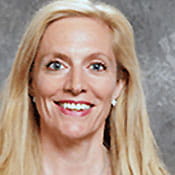 Dr. Lael Brainard, Governor
Dr. Lael Brainard, GovernorBoard of Governors of the Federal Reserve System
 Tracey J. Miller, Board President
Tracey J. Miller, Board PresidentLeeds Center for the Arts
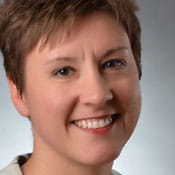 Jen Algire, President and CEO
Jen Algire, President and CEOThe Greater Clark Foundation
 Selina Arnett, Vice President
Selina Arnett, Vice PresidentLeeds Center for the Arts
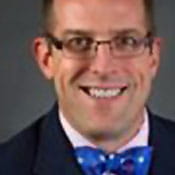 Tom Manning-Beavin, Director of Housing
Tom Manning-Beavin, Director of HousingKentucky Highlands Investment Corporation
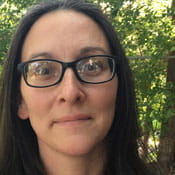 Katie Startzman, Owner
Katie Startzman, OwnerNative Bagel Company
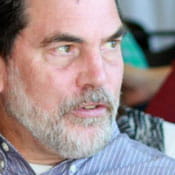 Peter Hille, President
Peter Hille, PresidentMountain Association for Community Economic Development
 Gina Dittmeier
Gina DittmeierArtist Monstrous Illustrations
 Rodney Wolfenbarger, Director
Rodney Wolfenbarger, DirectorBrushy Fork Institute
 Justin Dean Burton, Broom Artisan
Justin Dean Burton, Broom ArtisanThe Broom House
 Jonathan Dazo, Potter
Jonathan Dazo, PotterDazo’s Clay Studio
 Paul Wright, Vice President for Enterprise Development
Paul Wright, Vice President for Enterprise DevelopmentMountain Association for Community Economic Development
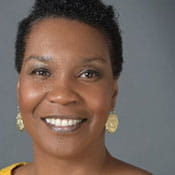 Ros Gay, Director
Ros Gay, DirectorClark County School District Family Resource Center
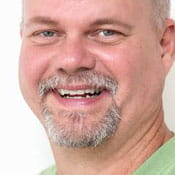 Tim Wade, Woodturner and Woodworker
Tim Wade, Woodturner and WoodworkerWood-Phoria
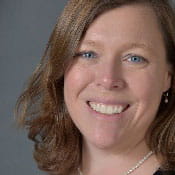 Beth Jones, Program Officer
Beth Jones, Program OfficerThe Greater Clark Foundation
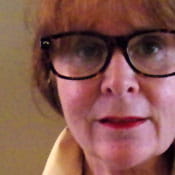 Lynn Tatum, Project Coordinator
Lynn Tatum, Project CoordinatorRockcastle County Development Board
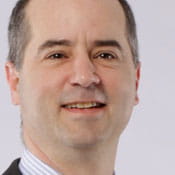 Mark Schweitzer, Senior Vice President in the Research Department
Mark Schweitzer, Senior Vice President in the Research DepartmentFederal Reserve Bank of Cleveland
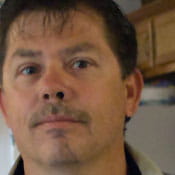 Danny Partin, Homeowner
Danny Partin, HomeownerEmlyn, Kentucky
